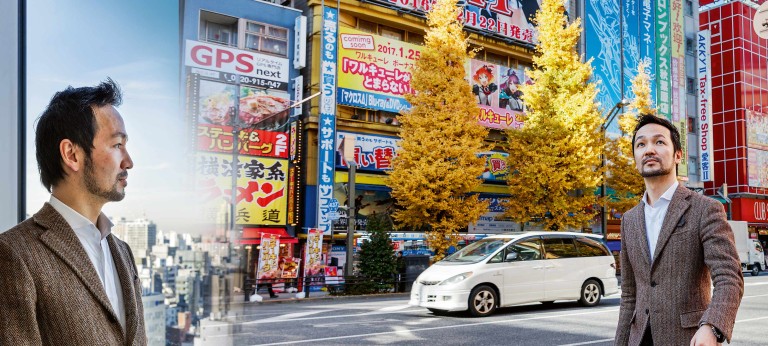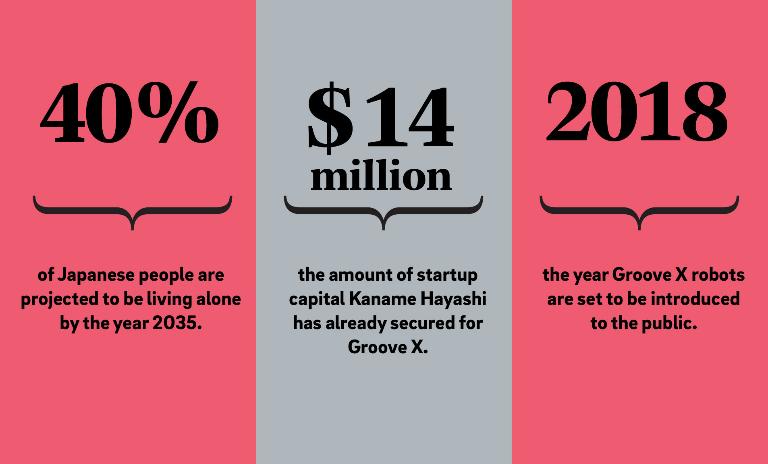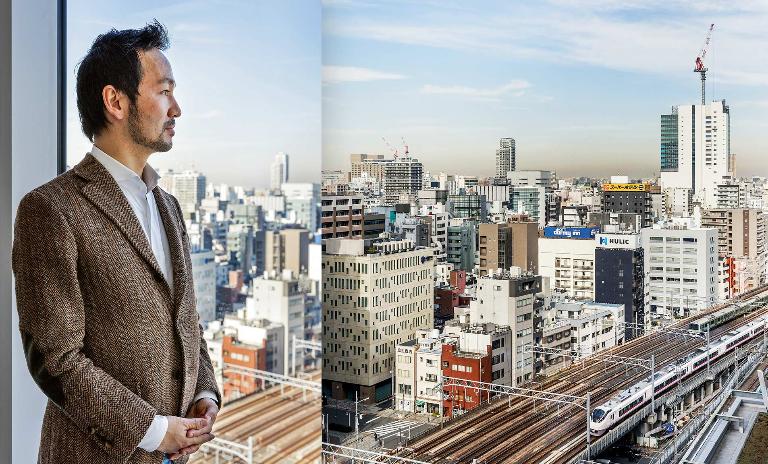How much do you depend on trust?
![{[downloads[language].preview]}](https://www.rolandberger.com/publications/publication_image/roland_berger_think_act_magazine_trust_cover_en_download_preview.jpg)
The central theme in our Think:Act magazine is trust.


by Henrik Bork
Will the machines rise in the battle against loneliness? Kaname Hayashi offers a new solution to the epidemic of the modern age.
Tokyo, Japan. Outside Shibuya Station, 2,500-odd people spill on to the road as the light turns green, making this the world’s busiest pedestrian crossing. The Shibuya Scramble, as it’s come to be known, is the result of five roads converging in one place. It’s a busy sight. Vehicles. Neon lights. People. They are all in one place, but they are all caught in their own bubbles. Some are immersed in their smartphones. Others lost in thought.
That’s Tokyo for you. Like others of its ilk, the world’s most populous metropolitan area is also somewhat ironically in the middle of what can be called a loneliness epidemic. Fewer Japanese are marrying. They have fewer children. The divorce rate is on the rise. Old parents are left alone in empty nests. Some estimate that 40% of the Japanese will be living alone by 2035. It’s not a happy picture.
Just a few kilometers away from the Shibuya crossing, sitting on his perch in the Fujisoft Building in the Akihabara quarter of Tokyo, Kaname Hayashi thinks he has a solution to loneliness: a robot.
"What we would like to solve is the gap between the survival strategy of our human genes, which want us to live as a group, and our modern lifestyle, which makes us lonely," says Kaname Hayashi, CEO and founder of Groove X, a startup determined to develop the world’s first robot that appeals to the heart.
A machine to combat loneliness, to fight against sadness. A therapeutic robot. One that doesn’t captivate with its intelligence or strength, but with its ability to sense emotions and respond to them. A robot that can charm you: just like R2D2 or BB-8, those two cute characters from the "Star Wars" epic.
Hayashi, 43, fashionably dressed and sporting a neatly trimmed beard, has a very matter-of-fact style and applies it to the advance of the robots, as if all of humanity has been waiting for these anti-loneliness machines. He speaks so softly, lisps endearingly and peppers the discussion with quotes from so many books that one could easily mistake him for a dreamy-eyed university professor.
"Sometimes, you feel lonely. It happens to us all. Anyone who claims that it doesn’t is probably lying."
Hayashi is a dreamer, no doubt. But he is out to turn his dream into reality. His startup, Groove X, has already completed prototypes for these robots, although no one has been allowed to see them yet.
"Sometimes, you feel lonely. It happens to us all. Anyone who claims that it doesn’t is probably lying," says Hayashi. He then suddenly launches into a tale about the origin of our species to explain his creation. In prehistoric times, sharing the meat of a slain mammoth was not so much the evidence of a selfless act around the campfire, but more about the prospect of gratitude and companionship in return. As long as we contributed to the group, we were not alone.
Hayashi glances out of the window of the conference room in the Fujisoft Building and takes in the canyons of buildings and neon advertisements in the Akihabara quarter. Far below, scores of people are scurrying back and forth. Loneliness? Aren’t we living in the age of social media? Don’t we spend our days chatting with more people than ever before, whether we actually know them or not? Could our era be the least lonely moment in evolutionary history?
No, it’s all an illusion. Today, we tend to live alone or in small groups, says Hayashi. However, we continue to carry the prehistoric "loneliness gene" with us, creating a void. "Facebook, other social media or video games are such a big industry precisely because they fill this void," he says. As will Hayashi’s robots.
Hayashi started as an engineer. He specialized in aerodynamics and was involved in the design of both the Lexus LFA model and Toyota’s Formula 1 racing car. He later attended the SoftBank Academia, established by millionaire Masayoshi Son, who enjoys something of a cult status in Japan. SoftBank Academia is Son’s unorthodox training institute for executives. He recognized Hayashi’s talent and appointed him to head the robotics arm of SoftBank, which then went on to develop and market Pepper the robot.
Pepper, a babbling humanoid, or robot that looks like a person, now stands in Tokyo’s cellphone shops. The robot was hugely popular and made Hayashi famous. "If anyone can develop a robot like this to combat loneliness, then I certainly can," he announces confidently. He has already secured $14 million in startup capital. In a neighboring room, 20 engineers are tinkering with the robots, which are set to be introduced to the public in 2018.
In 2015, Hayashi moved his firm onto the "incubator floor" of the Fujisoft Building, where the Groove X team shares space with other startups. With its hissing espresso machines, a motorbike parked between the long wooden benches and its youthful energy, this space gives a little nod to the culture of Silicon Valley.
The press has been racking its brains ever since to work out where the Groove X robot’s charm will lie. But the details are under wraps. What has leaked out is the fact that Hayashi’s creation will not speak. As Antoine de Saint-Exupéry, the author of "The Little Prince", once wrote: "Words are the source of misunderstandings." And as Hayashi admits, he was also inspired by the aesthetics of the great Japanese tea master, Sen no Rikyu. His tea houses have very narrow windows, their interiors are minimalist to the extreme, but they give free rein to the imagination. Less is more.
Hayashi had his eureka moment when he visited a retirement home in Tokyo with SoftBank’s Pepper robot in 2014. He asked an elderly lady what else she would like to see in the robot. "It would be nice if it had warmer hands," she replied. "That was a shock for me," remembers Hayashi. Like all his colleagues, he had been fixated on the nuts and bolts: the language, artificial intelligence (AI) and the like. "But then I realized that we were too focused on the conscious side of communication."
Groove X’s robots are likely to propel the robotics industry in a new direction, with emotional robots, or, as Hayashi prefers to describe them, "subconscious robots." The aim is to build robots that can communicate with us on a very elementary, unspoken level. Instead of trying to imitate people, which is still too much of a challenge for AI, Hayashi’s robots are to be more like a kind of artificial pet.
Robots have appealed to people’s emotions before. Sony’s Aibo, one of the first of this kind, could wag its tail and blink some lights when petted by a human, which made the little robot dog popular in homes for the elderly in Japan starting in 1999. Toyota is selling a little baby robot, called Kirobi Mini, which is marketed as being "always on hand for heart-touching communications." But so far interactions between these robots and humans have been limited. Hayashi promises his creation will be become a real "companion robot" for lonely people.
OK. But isn’t it tremendously sad to send a lifeless robot into a retirement home? Isn’t the best company for a lonely person fundamentally another person? "If they have enough human company, they may not need my robots," counters Hayashi drily. But, the reality in most major cities looks rather different. "Our robots are not intended to replace human warmth," says Hayashi. "We don’t want to replace anything at all."
That aside, Japan isn’t a bad place to extend the field of robotics with a new archetype, explains Hayashi. Christianity and Islam both hold the belief that man should not presume to create new beings. That is God’s work, and people believe that if we create something similar to ourselves, it would almost certainly turn against its creator before long. "Some people call it the ‘Frankenstein Complex’," says Hayashi. It’s different in Japan. One reason for the relative willingness of the Japanese to accept technology may be Shintoism. According to this religion, there can be a soul inside every being, in every tree, every waterfall. Even in a lifeless stone. Perhaps, suggests Hayashi, that’s why the Japanese are less hesitant when it comes to building robots.
"Our robots are not intended to replace human warmth. We don’t want to replace anything at all."
Although today loneliness is a global problem, the types of robots created by different cultures vary wildly. In Hollywood movies, for instance, the lovable, whistling Star Wars robots R2D2 and BB-8 are exceptions to the rule. Instead, films tend to be dominated by militant battle robots. In contrast, Hayashi grew up with the cute Studio Ghibli characters in the animated films of Hayao Miyazaki. "They can’t speak. People don’t benefit from them, but they do live with them," says Hayashi. Maybe it’s not such a bad model for a robotics business with big ambitions, a kind of robot charm offensive. The force awakens.
After a number of critical questions, all of which he parried calmly and politely, Hayashi breathes a deep sigh and asks if he can offer a question in return. "What about when parents give their child a teddy bear, not just their own warm skin?" His simple question arrests the conversation. Hayashi’s new robots, he reiterates, don’t want to replace anyone, but they do have big ambitions. They are far from being an automated "tool," and even further from a functional being from the realm of cognitive sciences. Their world is that of the emotions. "Ultimately, it’s our goal to increase human potential with our robots." By raising the self-esteem of its human owner. "In dispelling your loneliness, it makes you a better person. I believe that machines can heal humanity. We believe that robots can make this world a better place."

![{[downloads[language].preview]}](https://www.rolandberger.com/publications/publication_image/roland_berger_think_act_magazine_trust_cover_en_download_preview.jpg)
The central theme in our Think:Act magazine is trust.
Curious about the contents of our newest Think:Act magazine? Receive your very own copy by signing up now! Subscribe here to receive our Think:Act magazine and the latest news from Roland Berger.



